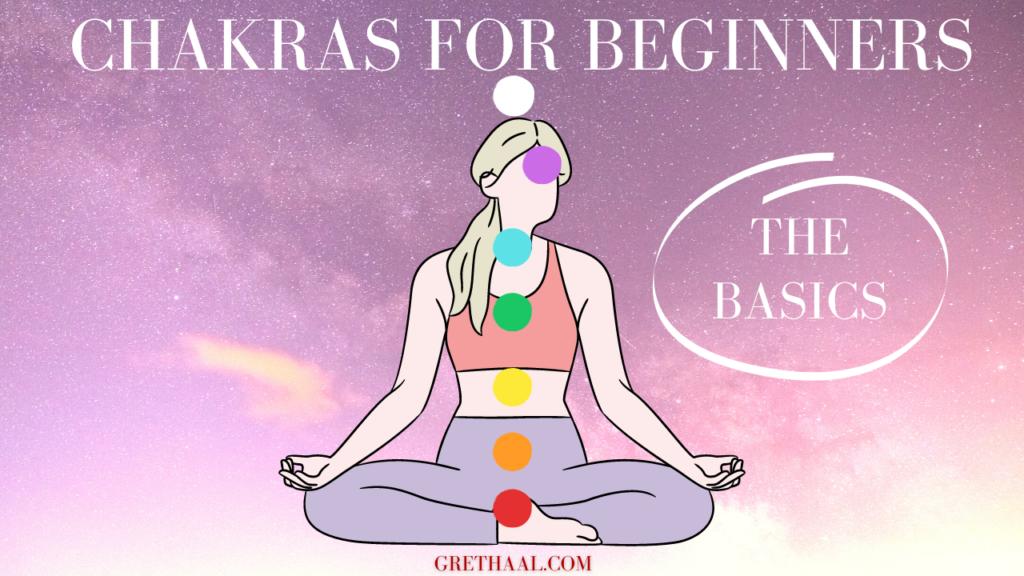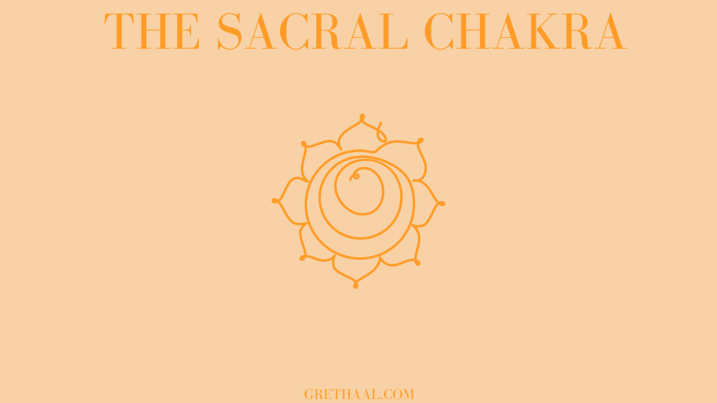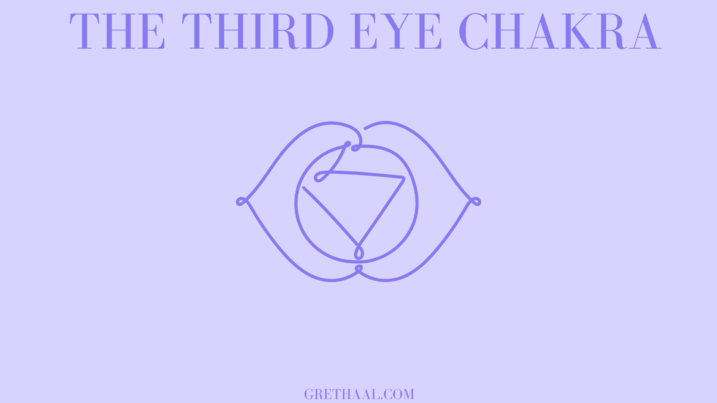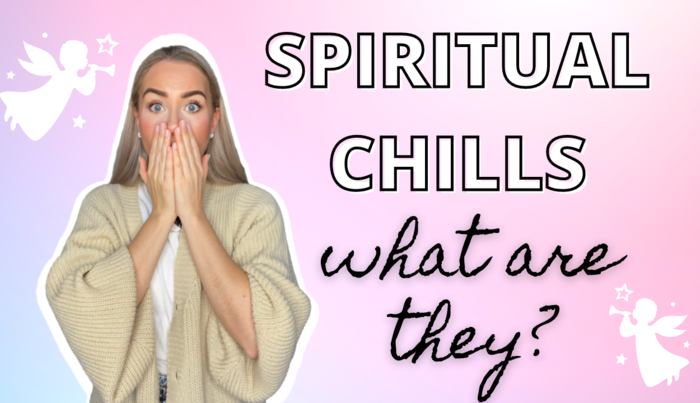If you are not exactly a newbie to holistic and spiritual health, you will probably know what chakras are and how they work. However, if you have just recently dipped your toe into these curious waters, you might be looking for some information that is beginner-friendly and isn’t too overwhelming. Throughout my life, I have encountered people who had no idea what chakras are and wanted to learn more or they had already begun their exploration, however, still felt confused. This is exactly why I wanted to create a simple ‘chakras for beginners’ guide that would only give the most basic and foundational information. Diving deeper into the world of chakras whilst having a weak foundation can be very confusing. Moreover, I constantly see people experiencing difficulties in grasping further information if they don’t fully understand what chakras mean and how they serve us.
I will not bother you with unnecessary information in this guide. Let’s leave it for my future posts. This is your ultimate ‘chakras for beginners’ guide.
Enjoy!
WHAT ARE CHAKRAS?
Just the way you have your physical body, you have your emotional, mental, and spiritual bodies as well. All of these bodies are connected and the health of one body can influence the health of other bodies. It is all interconnected. The most simple example could be the way we start feeling nauseous when we are fearful or nervous. Chakras are spiritual energy centres or vortexes within your body that represent your physical, emotional, mental, and spiritual health. In Sanskrit, the word ‘chakra’ literally means ‘wheel’ or ‘disc. The earliest written mention of the chakras go back to India and it is believed that it is based on oral traditions of the Aryan culture (Anodea Judith, Wheels of Life). However, the truth is that many different cultures talk about various energy points in our bodies which is fascinating.
CAN WE SEE CHAKRAS?
Usually, a person will not be able to see chakras unless they have well-developed spiritual abilities. Even then, it really depends on their spiritual gifts. At this point, we do not possess any physical tools that would help us clearly see chakras within people’s bodies. The good news is, we can feel chakras and anyone can do it. When we tune in, we are able to sense these energy centres within our own bodies and actually, other people’s bodies as well. The latter may require more time and training but it’s an ability that we all possess.
HOW DO CHAKRAS WORK?
We have thousands of chakras spread out all throughout our bodies and even outside of our physical bodies. There are many different chakra systems that people choose to work with. Some people choose to work with 22 chakras, some people find that the 12 chakra system is what they resonate with. However, the most standard and popular (if you will) is the 7-chakra system. This is the system that we are going to discuss in this guide as I believe this is the most appropriate system for this ‘chakras for beginners’ guide.
These 7 chakras are located along the column of your spine. They go all the way from the base of the spine to the crown of the head. As I already mentioned, chakras are basically energy centres (imagine a spinning wheel or vortex). However, together they create an upward and downward current of energy. Therefore, if one of the chakras is blocked, the energy can no longer flow freely. Imagine a traffic jam that was created by some big or minor accident. Now thousands of people are stuck, beeping and getting frustrated. This is exactly what happens when there’s trouble in one of your chakras. Except we are the ones getting frustrated.
I do want to mention that your chakras can also be underactive or overactive which means that you may experience totally different symptoms in each case.
Each of the 7 chakras represents different areas of your life and affect different organs and glands. The lower the chakra, the more physical it is. For example, the first Root Chakra is mostly related to our basic physical needs & material issues. If this energy centre is unbalanced, we may experience lower back issues. Similarly, the higher the chakra, the more spiritual we get. For example, the Third Eye chakra represents our imagination, intuition, and psychic abilities. If this chakra is unbalanced, we may experience headaches.
THE 7-CHAKRA SYSTEM
Hopefully, you are starting to understand the concept of chakras a little better and the visuals in this ‘chakras for beginners’ guide helped out. Now we are going to talk about the 7 chakra-system and get more specific.
Each of the 7 chakras is represented by a specific colour. Additionally, as I already mentioned, each chakra is responsible for different areas of your life and body. Many people think that the upper chakras are superior to the lower ones, however, it is not true. Your lower chakras are just as important as the higher ones because they are THE foundation. Just like a house needs to have a proper foundation, you cannot have a healthy flow of energy without healthy lower chakras. By the way, if you need some motivation for balancing your lower chakras, guess what? Your manifesting abilities DEPEND on your lower chakras because this is where your ideas manifest into physical reality. Interestingly, our chakras interact with other people’s chakras all the time, therefore we have to be careful with who we choose to spend our time with.
As the main purpose of this ‘chakras for beginners’ guide is to give you foundational information only, I will only include short descriptions of each chakra. Additionally, I am going to present you with the Sanskrit name of each chakra. You do not have to remember them, but they will be useful in the future.
THE ROOT CHAKRA (MULADHARA)
Sanskrit name: Muladhara
Meaning: Root support
Colour: Red
Location: Base of spine
Element: Earth
Sense: Smell
Glands: Adrenals
The Root Chakra is all about survival and feeling secure. It relates to everything physical and material. This chakra connects to Mother Gaia (Earth). Additionally, it also plays an important role in your manifesting abilities because this is where an idea finally becomes solid/physical through action. If your Root Chakra is unbalanced, you may have trouble with your weight and various eating disorders. Moreover, problems with money may also arise.
THE SACRAL CHAKRA (SVADHISTHANA)
Sanskrit name: Svadhisthana
Meaning: Sweetness
Colour: Orange
Location: Lower abdomen, genitals
Element: Water
Sense: Taste
Glands: Ovaries and testicles
The Sacral Chakra is the centre of creative and sexual freedom, our emotions, and our relationships. If this chakra is balanced, we are able to be sensual with ourselves and our partners. Moreover, we respect ourselves and are able to have clear boundaries. By the way, you do not have to be sexually active to have a healthy second chakra. If this chakra is unbalanced, you may have issues with manipulation, addictions, and your reproductive system.
THE SOLAR PLEXUS CHAKRA (MANIPURA)
Sanskrit name: Manipura
Meaning: Lustrous gem
Colour: Yellow
Location: Above navel (solar plexus)
Element: Fire
Sense: Sight
Glands: Pancreas, adrenals
The Solar Plexus chakra is your centre of power and confidence. This is where we start grounding our ideas into the physical as this is the first of the lower chakras. If this chakra is unbalanced, you may have issues with decision making, self-esteem, and your energy levels in general. Moreover, you may also manifest various problems with your digestive system. If this chakra is balanced, you feel confident in yourself and your decisions. This is also where our belief and determination come from.
THE HEART CHAKRA (ANAHATA)
Sanskrit name: Anahata
Meaning: Unstruck
Colour: Green (also pink)
Location: Heart centre
Element: Air
Sense: Touch
Glands: Thymus
The Heart Chakra is obviously the centre of our love for others and ourselves. This chakra deals with the balance between giving and receiving and can only be balanced when both energies are present. On one hand, when it is not balanced, we may have a hard time saying ‘no’, put other people’s well-being before our own. On the other hand, it can swing the opposite way. We may become egotistical and lose empathy for others.
THE THROAT CHAKRA (VISHUDDHA)
Sanskrit name: Vishuddha
Meaning: Purification
Colour: Bright blue
Location: Throat
Element: Sound
Sense: Hearing
Glands: Thyroid, parathyroid
The Throat Chakra is all about communication and freedom of expression. Many writers, artists, actors, and public speakers will have a very active Throat Chakra. When this chakra is unbalanced, we may have a fear of speaking up or actually be too dominant as well. Moreover, social anxiety may also be an issue. When this chakra is balanced, we are expressive, able to speak our truth, feel a great balance between speaking and listening, and feel at ease when meeting new people.
THE THIRD EYE CHAKRA (AJNA)
Sanskrit name: Ajna
Meaning: To perceive & to command
Colour: Indigo
Location: Centre of the head, between eyebrows
Element: Light
Sense: Sometimes said to be the mind
Glands: Pineal
The Third Chakra is fascinating because it’s the centre of our intuition, psychic abilities, imagination, and dreams. When this chakra is unbalanced, we may experience trouble making decisions because we don’t a clear vision of what we want. Moreover, the imbalance may manifest as various learning disabilities, confusion, memory loss, nightmares, hallucinations, and brain fog. A balanced Third Eye Chakra allows us to dream freely, understand what we want from life, trust our intuition see under the veil.
THE CROWN CHAKRA (SAHASRARA)
Sanskrit name: Sahasrara
Meaning: Thousandfold
Colour: White (also violet)
Location: Top of the head
Element: Thought
Sense: –
Glands: Pituitary
The Crown Chakra is our channel to the Higher Dimensions and Higher Learning. This is the centre of inspiration and it connects us to all things spiritual. If this channel is out of balance, we are narrow-minded, we may lack purpose and feel disconnected. This centre of knowledge can swing either way as well. On one hand, we may be overly concerned with the material and ignore the spiritual. On the other hand, we may be obsessed with the world of spirituality and ignore the physical. Many self-proclaimed ‘gurus’ suffer from an overactive crown chakra.
Last but not least, I want to encourage you to take your learning slow. Do not get frustrated if you don’t understand something fully. You may always connect with other would in the spiritual community and share your concerns. Furthermore, you can contact me in the comment section down below or on my Youtube channel. I hope you found this ‘chakra for beginners’ guide useful!
Namaste. I am proud of you.

















2 comments